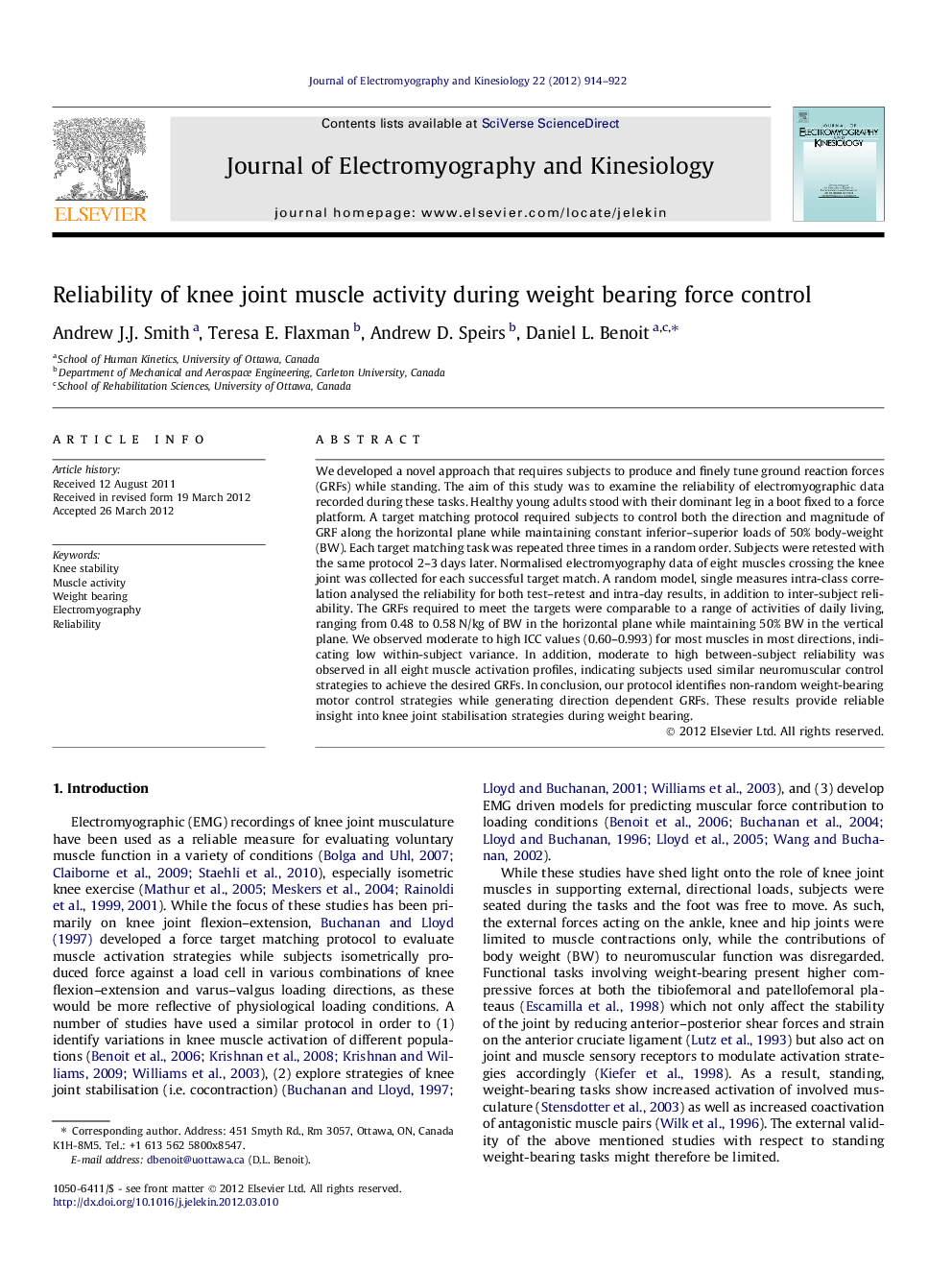| Article ID | Journal | Published Year | Pages | File Type |
|---|---|---|---|---|
| 4064854 | Journal of Electromyography and Kinesiology | 2012 | 9 Pages |
We developed a novel approach that requires subjects to produce and finely tune ground reaction forces (GRFs) while standing. The aim of this study was to examine the reliability of electromyographic data recorded during these tasks. Healthy young adults stood with their dominant leg in a boot fixed to a force platform. A target matching protocol required subjects to control both the direction and magnitude of GRF along the horizontal plane while maintaining constant inferior–superior loads of 50% body-weight (BW). Each target matching task was repeated three times in a random order. Subjects were retested with the same protocol 2–3 days later. Normalised electromyography data of eight muscles crossing the knee joint was collected for each successful target match. A random model, single measures intra-class correlation analysed the reliability for both test–retest and intra-day results, in addition to inter-subject reliability. The GRFs required to meet the targets were comparable to a range of activities of daily living, ranging from 0.48 to 0.58 N/kg of BW in the horizontal plane while maintaining 50% BW in the vertical plane. We observed moderate to high ICC values (0.60–0.993) for most muscles in most directions, indicating low within-subject variance. In addition, moderate to high between-subject reliability was observed in all eight muscle activation profiles, indicating subjects used similar neuromuscular control strategies to achieve the desired GRFs. In conclusion, our protocol identifies non-random weight-bearing motor control strategies while generating direction dependent GRFs. These results provide reliable insight into knee joint stabilisation strategies during weight bearing.
